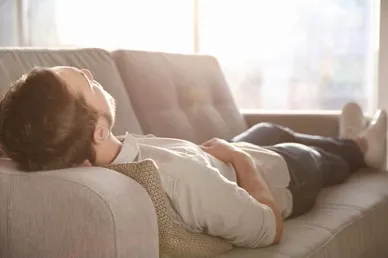Read our Blog

Rest Will Not Heal Your Injury
“To be injured is to be compromised. We must come back more resilient than where we started." Hannah Sweitzer
Have you ever been told to rest when experiencing pain with the anticipation your body will heal and the pain will go away?
Rest is often the first piece of advise given my friends, family, and even medical professionals to someone who is in pain.
I've heard it from patients way too many times... "my doctor told me to rest for 2 months then resume activity..." And they come to me 2 months later, still in pain!
This approach often results in 1 of 2 scenarios:
1. The pain does not subside
2. The pain goes away during period of inactivity and returns when activity is resumed

Why won't rest heal my injury?
Complete rest may help relieve pain, but it also leads to decreased mechanical properties of the tissue, muscle weakness, and negatively effects the rest of your body.
Successful management of pain/injury to either a tissue (muscle or tendon) requires understanding of load capacity and adaptation. I'm going to try and keep this simple, but I truly want you to understand your body and how it works.
What is Load Capacity?
Load capacity refers to the ability to perform an activity or movement at a certain volume and frequency without exacerbating or causing tissue injury.
How does load capacity effects a muscle or tendon?
When the demand is greater than the tissue's load capacity, injury can occur.
Repetitive stress beyond the tendons load capacity can cause small micro trauma leading to structural changes within the tissue.
There is a threshold that determines whether the applied load induces a positive or negative adaptation response. There are 4 possible responses depending on degree of stress relative to the threshold. I will use the word "stress" to refer to the intensity of any activity or exercise that effects the injured area.
Prolonged stress deprivation below the threshold (aka prolonged REST) can produce a negative adaptation response and tissue degradation.
Stress within a small range above the threshold will maintain normal tissue charsteristics
Appropriate and progressive loading within a small range above the threshold can create a positive response.
Repetitive stress largely above the threshold can also produce a maladaptive response including the production of inflammatory cytokines and markers of cell death.
Can the threshold change?
The threshold for each tissue can either increase or decrease based on long term behavior. Progressive loading (aka RESISTANCE TRAINING) can cause a positive change in the threshold; the tendon becomes STRONGER and can withstand stress that once exceeded the threshold causing injury.
Conversely, prolonged REST, or lack of stimulation, can lower the threshold decreasing the tendon’s load capacity. The tendon become WEAKER. Load and stress that the tissue could once handle, is now above the threshold and can cause damage/injury.

Bottom Line
Rest is not effective in treating pain/injury. Rest may help temporarily reduce your pain, but it will not improve tissue quality, enhance function, or prevent recurrence of symptoms.
What should you do?
If you are experiencing pain or injury, go see your local physical therapist. Through the use of manual therapy and progressive resistance exercise, a skilled physical therapist can help reduce your pain, help you return to activity, and prevent recurrence of future symptoms!
Subscribe to our YouTube channel for rehabilitation tips and tutorials.
Written By Hannah Sweitzer, PT, DPT, OCS, Cert. DN, CSCS
References
Docking SI, Cook J. How do tendons adapt? Going beyond tissue responses to understand positive adaptation and pathology development: A narrative review. J Musculoskelet Neuronal Interact. 2019;19(3):300-310.
van der Vlist AC, Winters M, Weir A, et al. Which treatment is most effective for patients with Achilles tendinopathy? A living systematic review with network meta-analysis of 29 randomised controlled trials. Br J Sports Med. 2021;55(5):249-256. doi:10.1136/bjsports-2019-101872
Xu Y, Murrell GA. The basic science of tendinopathy. Clin Orthop Relat Res. 2008;466(7):1528-1538. doi:10.1007/s11999-008-0286-4
Our one-on-one treatment sessions ensure that you fully understand your body and take ownership of your health so that you can have control over doing the things you love!
Send us a Message
Let's Have a Chat
954 - 519 - 4185
Find us at
2852 E Oakland Park Blvd
Fort Lauderdale, FL 33306
2024 REVIVE PHYSIOTHERAPY | ALL RIGHTS RESERVED


